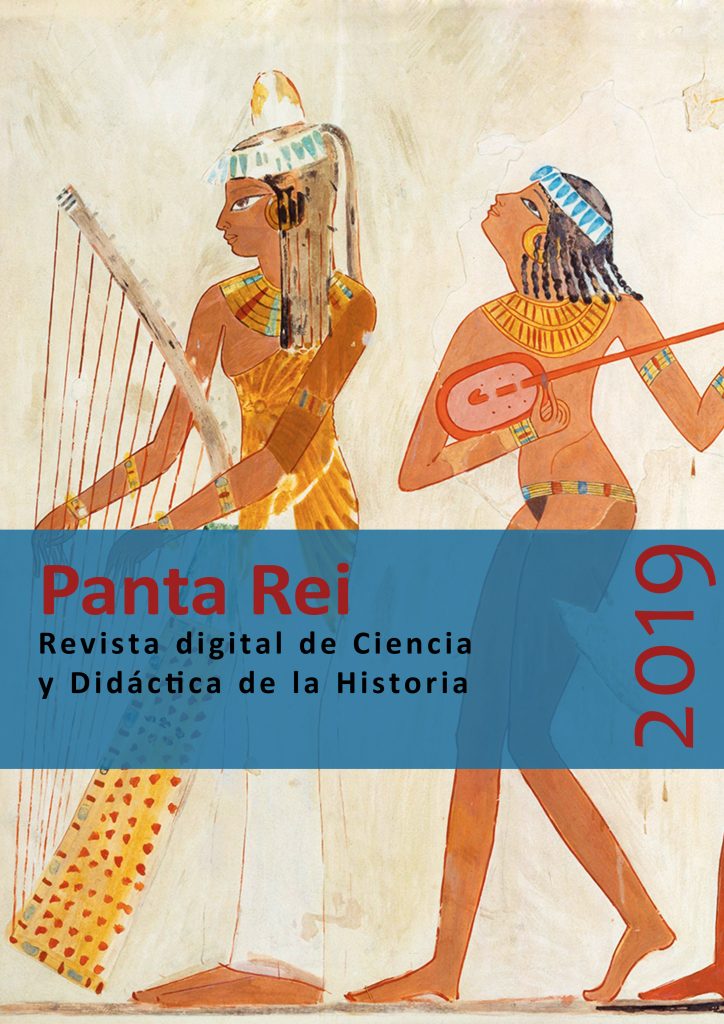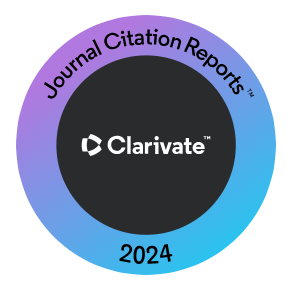Memoria cultural en el Egipto Faraónico. Algunas reflexiones sobre su origen, función y pervivencia histórica
Resumen
Los estudios de J. Assmann sobre las características que tiene la memoria cultural en las primeras civilizaciones han originado diferentes debates además de haber abierto nuevas líneas de investigación. En este trabajo analizaremos qué se entiende por memoria cultural para, posteriormente, buscar los orígenes de dicha memoria cultural del Egipto Faraónico cuando apareció el Estado y en tiempos predinásticos. Con posterioridad comprobaremos cómo la memoria cultural pervivió en el Egipto faraónico a lo largo de más tres mil años de historia. Una memoria cultural que se transmitió a través de los textos y, especialmente, de una forma visual con los monumentos, funerarios o no, que transmitían no solo unas creencias funerarias, también una concepción del mundo en el que los antiguos egipcios vivieron. La estrecha relación que existió entre dicha memoria cultural y lo que los antiguos egipcios veían en su entorno explica la perdurabilidad, no solo de sus creencias, también de una civilización que fue capaz de emitir unos mensajes que eran entendidos por todos los miembros de la sociedad.
Descargas
-
Resumen871
-
PDF309
-
EPUB128
Citas
Assmann, J. (1977). Die Verborgenheit des Mythos im Alten Ägypten. Göttinger Miszellen, 25, 7–43. Assmann, J. (1991). Stein und Zeit. Mensh und Gesselbchaft im Alten Ägypten. München: Wilheim Fink.
Assmann, J. (1999). Cultural and literary texts. En Moers G. (ed.), Egyptian literature, Lingua Aegyptia, Studia Monographica 2 (pp. 1-15). Hamburg: Verlag Widmaier.
Assmann, J. (2005a). Das kulturelle Gedächtnis. München: Beck.
Assmann, J. (2005b). Egipto. Historia de un sentido. Madrid: Abada.
Assmann, J. (2006). La distinción mosaica o el precio del monoteísmo. Madrid: Akal.
Assmann, J. (2008). Communicative and Cultural Memory. En Cultural Memory Studies. An International and Interdisciplinary Handbook (pp. 109-118). Berlín: Walter de Gruyter.
Assmann, J. (2011). Historia y Mito en el Mundo Antiguo. Los orígenes de la cultura en Egipto, Israel y Grecia. Madrid: Gredos.
Assmann, J. (2017). Religio duplex. Misterios egipcios e Ilustración europea. Madrid: Akal.
Baines, J. (1989). Ancient Egyptian concepts and uses of the past: third to second millennium evidence. En R. Layton (ed.), Who Needs the past? Indigenous values and archaeology (pp. 131-149). London: Routledge.
Baines, J. (1997). Temples as symbols, guarantors and participants in Egyptian civilization. En S. Quirke (ed.), The Temple in Ancient Egypt (pp. 216-241). London: British Museum.
Baines, J. (2003). Research on Egyptian literature: background. Definitions, prospects. En Z. Hawass y L. Pinch (eds.), Egyptology at the dawn of the twenty-first Century (pp. 1-47). El Cairo: American University in Cairo.
Baines, J. (2007a). Visual and Written Culture in Ancient Egypt. Oxford: Oxford University Press. Baines, J. (2007b). “Orality and literacy”. Visual and Written Culture in Ancient Egypt (pp. 146-178). Oxford: Oxford University Press.
Baines, J. (2008). On the evolution, purpose and forms of Egyptian Annals. Zeichen aus dem Sand. Streiflichter aus Ägyptens Geschichte zu Ehren von Günter Dreyer (pp. 19-40). Wiesbaden: Harrassowitz.
Baines, J. y Eyre, C. (1983). Four notes on literacy”. Göttinger Miszellen, 61, 65-96.
Bietak, M. (2018). Introduction to palaces in Egypt: what they tell us about the Ruler, administration and Culture. En M. Bietak y S. Preel (eds.), Palaces in Ancient Egypt and the Ancient Near East, vol. 1 (pp. 23-38). Vienna: Verlag der Österreichischen Akademie der Wissenschaften.
Bussmann, R. (2016). Great and Little traditions in Egyptology. En Königtum, Staadt und Gesellschaft Früher Hochkulturen (pp. 37-48). Wiesbaden: Harrassowitz.
Butler, S. & Bradley, M. (2019). The Senses in Antiquity. London: Routledge.
Buxton, R. (1994). Imaginary Greece. The contexts of Mythology. Cambridge: Cambridge University Press.
Cavillier, G. (2013). Ramesses III’s wars and triumphs at Medinet Habu. Between narration, history and identity. En A. Spalinger y J. Armstrong (eds.), Rituals of Triumph in the Mediterranean World (pp. 23-36). Leiden: Brill.
Chaniotis, A. (2006). Rituals between Norms and Emotions. Rituals as shared Experience and Memory. Kernos suppl. 16, 211-38.
Di Paolo, S. (2016). War remembrance narrative. Negotiation of memory and oblivion Mesopotamian art. En D. Nadali (ed.), Envisioning the Past through Memories. How Memory Shaped Ancient Near Eastern societies (pp. 146-162). London: Bloomsbury.
El-Daly, O. (2005). Egyptology. The missing millennium, ancient Egypt in medieval Arabic writings. London: University College of London.
Erll, A. (2011). Memory in Culture. New York: Palgrave Macmillan.
Frangipane, M. (2018). Different trajectories in State formation in Greater Mesopotamia: A view from Arslantepe (Turkey). Journal of Archaeological Research, 26(1), 3-63.
Frankfurter, D. (1998). Religion in Roman Egypt. Assimilation and Resistance. Princeton: Princeton University Press.
Friedman, R. (2009). Hierakonpolis locality HK29A. The predynastic ceremonial center revisited. Journal American Research Center in Egypt, 45, 79-103.
Goebs, K. (2002). A functional approach to Egyptian myth and mythemes, Journal of Ancient Near Eastern Religions, 2, 27–59.
Grifiths, J. (1970). Plutarch’s De Iside et Osiride. Cardi : University of Wales.
Harrington, N. (2012). Living with the Dead. Ancestor Worship and Mortuary Ritual in Ancient Egypt. Oxford: Oxbow.
Harth, D. (2008). The Invention of Cultural Memory. Cultural Memory Studies. An international and Interdisciplinary Handbook (pp. 85-96). Berlin: de Gruyter.
Hartung, U. (2018). Cemetery U at Umm el-Qaab and the funeral Landscape of the Abydos Region in the 4th Millennium BC. Desert and the Nile. Prehistory of the Nile Basin and the Sahara. Papers in honour of Fred Wendorf (pp. 313-335). Cracovia: Studies in African Archaeology.
Hays, H. (2009). Between Identity and agency in ancient Egyptian ritual. En R. Nyord y A. Kjolby (eds.), Being in Ancient Egypt. Thoughts on Agency, Materiality and Cognition (pp. 14-30). Oxford: BAR International Series.
Heagy, T. (2014). Who was Menes?. Archéo-Nil, 24, 59-92.
Heinz, M. y Feldman, M. (Eds.) (2007). Representations of Political Power. Case studies from Times of Change and Dissolving Order in the Ancient Near East. Pennsylvania: Eisenbrauns. Hornung, E. (1966). Geschichte als Fest. Zwei Vorträge zum Geschichtsbild der frühen Menscheit. Darmstadt: Wissenschaftliche Buchgesellschaft.
Kahl, J. (2010). Archaism. En W. Willeke (ed.), UCLA Encyclopedia of Egyptology. Los Angeles, CA: University of California. Recuperado de http://digital2.library.ucla.edu/viewItem.do?ark=21198/zz0025qh2v
Liverani, M. (1990). Prestige and Interest. International relations in the Near East ca. 1600-1100 BC. Padova: Sargon.
Loprieno, A. (Ed.) (1996). Ancient Egyptian Literature. History and Forms. Leiden: Brill.
Mathieu, B. (2011). Seth polymorphe: le rival, le vaincu, l’auxiliaire. ENIM, Égypte Nilotique et Méditerranéene , 4, 137-158. Malek, J. (1992). A meeting of the Old and New: Saqqara during the New Kingdom. En A. Lloyd (ed.), Studies in Pharaonic Religion and Society in Honour of J. Gwyn Grifiths (pp. 61-66). London: Egypt Exploration Society.
Manning, J. (2017). Cross-cultural Communication in Egypt. En R. Talbert y F. Naiden (eds.), Mercury’s Wings. Exploring modes of Communication in the Ancient World (pp. 271-288). Oxford: Oxford Scholarschip Online.
Morris, E. (2013). Propaganda and Perfomance at the Dawn of the State. Power, generating authority, cosmos, politics and the ideology of Kingship in Ancient Egypt and Mesopotamia (pp. 33-64). Pennsylvania: University Pennsylvania Press.
O’Connor, D. y Silverman, D. P. (eds.) (1995). Ancient Egyptian Kingship. Leiden: Brill.
Parkinson, R. (2002). Poetry and Culture in Middle Kingdom Egypt. A Dark side to Perfection. London: Equinox.
Peden, A. (2001). The Gra ti of Pharaonic Egypt. Scope and Roles of informal writings (c. 3100-332BC). Leiden: Brill.
Piquette, K. (2018). An Archaeology of Art and Writing. Early Egyptian Labels in Context. Cologne: Modern Academic Publishing. DOI: https://doi.org/10.16994/bak
Pongratz-Leisten, B. (2019). Ideology. En A. Gunter (ed.), A Companion to Ancient Near Eastern Art (pp. 283-308). Oxford: Wiley Blackwell.
Quirke, S. (2105). Exploring Religion in Ancient Egypt. Oxford: Wiley Blackwell.
Ristvet, L. (2015), Ritual, Performance, and Politics in the Ancient Near East. Cambridge: Cambridge University Press.
Robins, G. (1993). Women in Ancient Egypt. Harvard, MA: Harvard University Press.
Servajean, F. (2007). Djet et Neheh: Une histoire du temps égyptien. Orientalia Monspeliensia (vol. 18). Montpellier: University Paul-Valérey.
Shafer, B. (ed.) (2005). Temples of Ancient Egypt. London: I. B. Tauris.
Schneider, T. (2014). History as Festival? A Reassessment of the use of the past and the place of Historiography in Ancient Egyptian Thought. En J. Raaflaub (ed.), Ancient World. Comparative Studies. Thinking, recording and writing history in the Ancient World (pp. 117-143). Oxford: Wiley Blackwell.
Spencer, N. (2010). Priests and Temples. Pharaonic. En A. Lloyd (ed.), A Companion to Ancient Egypt (pp. 255-273). Oxford: Wiley Blackwell.
Stadler, M. (2008). Procession. En J. Dieleman y W. Wendrich (eds.), UCLA Encyclopedia of Egyptology. Los Angeles, CA: University of California. Recuperado de http://repositories.cdlib. org/nelc/uee/1014
Stephan, T. (2017). Writing the past. Ancient Egypt through the lens of Medieval Islamic thought. En J. Lowry y S. Toorawa (eds.), Arabic Humanities, Islamic thought, Essays in Honor of Everett K. Rowson (pp. 256-270). Leiden: Brill.
Stevens, A. (2015). Visibility, private religion and the urban landscape of Amarna. Seen & unseen spaces, Archaeological Review from Cambridge, 30(1), 77-84.
Stern, S. (2012). Calendars in Antiquity. Empires, States and Societies. Oxford: Oxford University Press.
Teeter, E. (2011). Religion and Ritual in Ancient Egypt. Cambridge: Cambridge University Press.
Van de Mieroop, M. (2012). The Mesopotamian and their past. En J. Wiesehöfer y T. Krüger (eds.), Periodisierung und Epochen-bewusstsein im Alten Testament und in seinem Umfold (pp. 37-56). Zurich: Franz Steiner Verlag.
Waerzeggers, C. (2011). The Pious king. Royal Patronage of Temples. Oxford Handbook of Cuneiform Culture (725-751). Oxford: Wiley Blackwell.
Wagoner, B. (2017). Handbook of Culture and Memory. Oxford: Oxford University Press.
Wendrich, W. (2013). Antiquarianism in Egypt. The importance of re. En A. Schnapp (ed.), World Antiquarianism. Comparative perspectives (pp. 140-158). Los Angeles, CA: Getty Research Institute.
Wilkinson, T. (2016). Power and authority in Early Dynastic Egypt. En J. van Dijk (ed.), Another Mouthful of Dust. Egyptological Studies in Honour of G.T. Martin (pp. 543-557). Orientalia Lovaniensia Analecta 246. Leiden: Brill.
Williams, B. y Logan, T. (1987). The Metropolitan museum knife handle and aspects of Pharaonic imagery before Narmer. Journal of Near Eastern Studies, 46(4), 245-85.
Yoffee, N. (2005). Myths of the archaic state. Evolution of the Earliest Cities, States and Civilizations. Cambridge: Cambridge University Press.
Yoffee, N. (ed.) (2015). Early Cities in Comparative Perspective: 4000 BCE–1200 CE. Cambridge: Cambridge University Press.
Derechos de autor 2019 Antonio Pérez Largacha

Esta obra está bajo una licencia internacional Creative Commons Atribución-CompartirIgual 4.0.
Todos los contenidos publicados en nuestra revista están sujetos a una licencia Atribución 4.0 Internacional (CC BY-SA 4.0) de Creative Commons. Usted es libre de compartir (copiar y redistribuir el material en cualquier medio o formato) y adaptar (remezclar, transformar y crear a partir del material para cualquier finalidad, incluso comercial), bajo los siguientes términos:
Reconocimiento: Debe reconocer adecuadamente la autoría, proporcionar un enlace a la licencia e indicar si se han realizado cambios. Puede hacerlo de cualquier manera razonable, pero no de una manera que sugiera que tiene el apoyo del licenciador o lo recibe por el uso que hace.
CompartirIgual: Si remezcla, transforma o crea a partir del material, deberá difundir sus contribuciones bajo la misma licencia que el original.
El texto completo de la licencia se puede consultar en: Licencia Creative Commons













